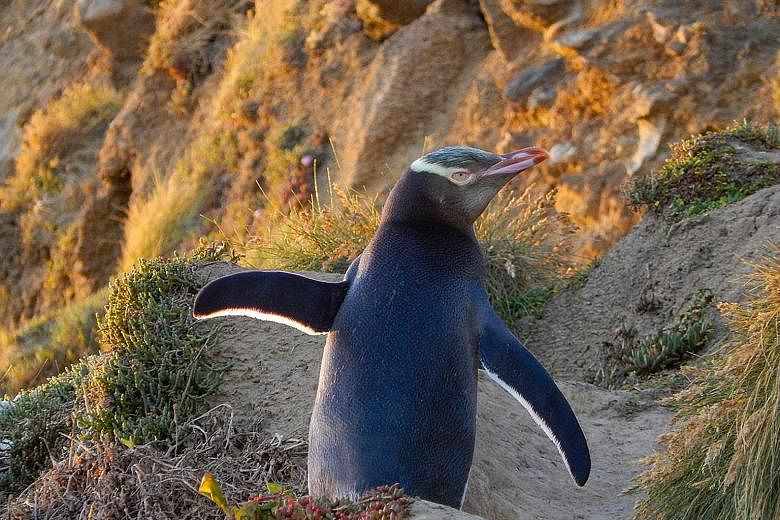How to gather plastic? Use the ocean currents
A Dutch engineer aiming to clean up vast ocean "garbage patches" of plastic unveiled a radical design breakthrough, enabling his ambitious project to start two years early.
Mr Boyan Slat's innovative scheme seeks to use ocean currents to help gather up an estimated five trillion pieces of plastic - everything from bottles to plastic bags, flip-flops and other detritus - from the planet's waters.
Mr Slat, 22, now hopes to begin deploying the first clean-up system within the next 12 months, instead of in 2020 as first promised.
He also hopes to be able to remove 50 per cent of the Pacific patch within five years, compared with initial estimates of 42 per cent within a decade.
Mr Slat now believes by 2050 the whole patch could be cleared. "Actually, I think that's quite a conservative estimate," he said.
The new design involves the use of "a fleet of many smaller systems", which will be weighed down by a specially designed floating 12m anchor, slowly moving with the plastic, driven by the same winds and currents. (The first system is already in production in California.)
They will be equipped with global positioning and monitoring systems, and the operating team will relay their positions to ships plying the area.
According to the Ocean Cleanup project, eight million tonnes of plastics enter the oceans every year, much of which has accumulated in the five giant garbage patches now fouling the seas. The plastic takes decades to break down.
Months of tests have already been carried out using a small prototype launched in June off the Dutch coast in the stormy North Sea.
The prototype was built at a cost of 1.5 million euros (S$2.3 million), financed through crowdfunding as well as donations, including from the Dutch government.
If the scheme progresses well in the Pacific, the next plan would be to move onto the second-most polluted spot lying in the Indian Ocean between Australia and Madagascar.
AGENCE FRANCE-PRESSE
Myth busted: People smell as well as dogs
People's sense of smell is just as sharp as those of rats and dogs, a US researcher said, calling for an end to a century-old "myth" to the contrary.
Rutgers University neuroscientist John McGann reviewed research and historical writings he says led to the misconception that the human sense of smell is inferior, according to the report in the journal Science.
"For so long people failed to stop and question this claim, even people who study the sense of smell for a living," he said. "The fact is the sense of smell is just as good in humans as in other mammals, like rodents and dogs."
Humans have long been believed to be capable of detecting about 10,000 different odours. In fact, the number is closer to one trillion, Dr McGann said.
The human olfactory bulb makes up just 0.01 per cent of the brain's volume compared to 2 per cent in mice, he added.
But its absolute size in people is actually quite large - in adults it can reach around 60mm - and has a similar number of neurons compared with those of other mammals.
The difference between humans, dogs and rodents when it comes to sense of smell may come down to different sensitivities to certain odours.
"We are capable of tracking odour trails, and our behavioural and affective states are influenced by our sense of smell," Dr McGann wrote. But although humans may be better at sniffing fine wines, dogs are likely to keep excelling at analysing the various types of urine on offer at the nearest fire hydrant.
AGENCE FRANCE-PRESSE
Yellow-eyed penguins face extinction by 2060
The iconic yellow-eyed penguin could disappear from New Zealand's Otago Peninsula by 2060, latest research warns.
In a newly published study in the international journal PeerJ, scientists have modelled factors driving the mainland yellow-eyed penguin population decline and are calling for action to reduce regional threats.
According to the researchers' prediction models, breeding success of the penguins will continue to decline to extinction by 2060 largely due to rising ocean temperatures.
The yellow-eyed penguin is classified as endangered by the International Union for Conservation of Nature.
The lead study author, Dr Thomas Mattern of the University of Otago, said his team's predictions are conservative estimates and do not include additional adult die-off events such as the one seen in 2013 in which more than 60 penguins died.
"Any further losses of yellow-eyed penguins will bring forward the date of their local extinction," Dr Mattern said in a statement from the university.
Increasing sea surface temperatures in part explain the negative trend in penguin numbers.
"The problem is that we lack data to examine the extent of human impacts, ranging from fisheries interactions and introduced predators to human disturbance, all of which contribute to the penguins' demise," said Dr Mattern.
"However, considering that climate change explains only around a third of the variation in penguin numbers, clearly those other factors play a significant role. Unlike climate change, these factors could be managed on a regional scale," he added.
Yellow-eyed penguins continue to drown as unintentional bycatch in nets set in penguin foraging areas, suffer from degradation of their marine habitat because of human activities, and die from unidentified toxins.

